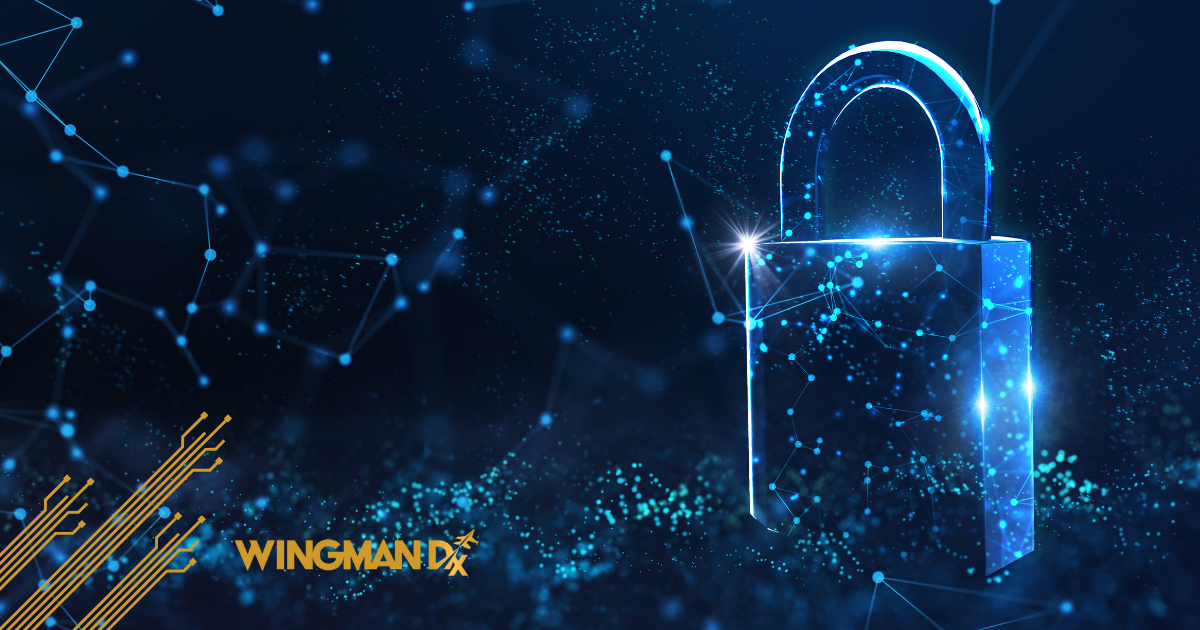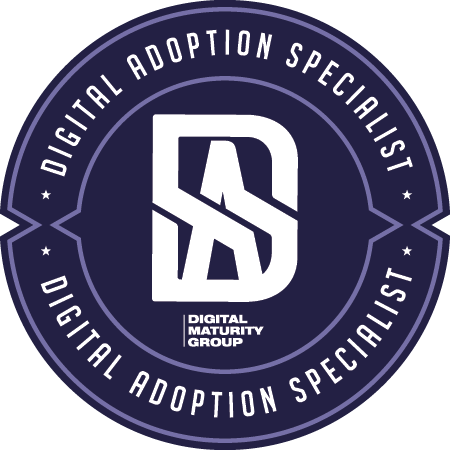In today’s digital age, where technology plays a pivotal role in our personal and professional lives, the concepts of digital adoption and cybersecurity have become increasingly important. While digital adoption refers to the integration and utilization of digital technologies in various aspects of our lives, cybersecurity aims to protect these digital systems from unauthorized access and potential threats. This article explores the interconnectedness of digital adoption and cybersecurity and highlights why they are inseparable in today’s evolving digital landscape.
Understanding Digital Adoption
Digital adoption refers to the process of integrating digital technologies into various aspects of our lives, including businesses, education, healthcare, and everyday activities. It involves embracing and leveraging the power of digital tools and platforms to enhance efficiency, productivity, and overall experiences. From cloud computing and mobile applications to artificial intelligence and the Internet of Things (IoT), digital adoption empowers individuals and organizations to leverage technology for their benefit.
The Importance of Cybersecurity
Cybersecurity plays a crucial role in safeguarding digital systems, networks, and data from potential threats, including hackers, malware, and unauthorized access. With the increasing dependence on digital technologies, the risk of cyberattacks and data breaches has also escalated. Cybersecurity measures are vital to protect sensitive information, maintain privacy, and ensure the smooth functioning of digital ecosystems. Without robust cybersecurity practices in place, individuals and organizations are vulnerable to significant financial losses, reputational damage, and legal consequences.
The Relationship between Digital Adoption and Cybersecurity
Digital adoption and cybersecurity are deeply interconnected, and one cannot thrive without the other. As digital technologies become more pervasive, the attack surface for potential cyber threats also expands. Organizations that embrace digital adoption without considering cybersecurity measures expose themselves to significant risks. On the other hand, a strong cybersecurity posture enables confident and secure digital adoption, fostering innovation and growth.
Digital adoption relies on trust, and cybersecurity is the foundation of that trust. When individuals and organizations feel confident in the security of their digital systems, they are more likely to embrace new technologies and fully leverage their benefits. Secure digital adoption ensures the integrity, confidentiality, and availability of data and resources, enabling individuals and businesses to harness the potential of technology without fear of compromise.
Challenges in Ensuring Digital Adoption and Cybersecurity
While the integration of digital technologies brings immense opportunities, it also poses challenges in terms of ensuring both digital adoption and cybersecurity. Some of the key challenges include:
- Rapid Technological Advancements: The pace at which new technologies emerge and evolve makes it challenging for cybersecurity practices to keep up. Ensuring the security of emerging technologies requires continuous monitoring, adaptation, and proactive measures.
- Human Factor: Human error and negligence often contribute to cybersecurity breaches. Lack of awareness, training, and adherence to best practices can create vulnerabilities in digital systems, making them susceptible to attacks.
- Complexity of Systems: The interconnectedness of digital systems and networks increases their complexity. Managing security across multiple platforms, devices, and applications demands robust cybersecurity frameworks and comprehensive risk management strategies.
Strategies for Promoting Secure Digital Adoption
To promote secure digital adoption, organizations and individuals can implement the following strategies:
- Conduct Risk Assessments: Regularly assess the potential risks and vulnerabilities associated with digital systems and networks. Identify areas of improvement and prioritize security measures accordingly.
- Implement Multi-Factor Authentication (MFA): Enforce strong authentication mechanisms, such as MFA, to add an extra layer of security. MFA requires users to provide multiple forms of identification, making it harder for unauthorized individuals to gain access.
- Stay Updated with Security Patches: Keep software, applications, and devices up to date with the latest security patches and updates. These patches often address vulnerabilities and help mitigate potential risks.
- Educate and Train Users: Provide comprehensive cybersecurity training and awareness programs to users. Equip them with the knowledge and skills to identify and respond to potential threats effectively.
The Role of Education and Training
Education and training play a vital role in ensuring the successful integration of digital technologies and robust cybersecurity practices. By investing in cybersecurity education, organizations can empower their employees to make informed decisions, detect potential threats, and respond appropriately. Similarly, individuals can enhance their digital literacy and adopt secure practices, protecting themselves and their digital assets from cyber threats.
Best Practices for Cybersecurity in Digital Adoption
To establish a strong cybersecurity foundation for digital adoption, consider the following best practices:
- Regularly Update Security Policies: Review and update security policies and procedures to align with the evolving threat landscape and organizational needs.
- Encrypt Sensitive Data: Implement encryption mechanisms to protect sensitive data at rest and in transit. Encryption ensures that even if data is compromised, it remains unreadable to unauthorized individuals.
- Perform Regular Vulnerability Assessments: Conduct periodic vulnerability assessments and penetration tests to identify weaknesses in digital systems. Address identified vulnerabilities promptly to prevent exploitation.
- Foster a Culture of Security: Promote a culture of cybersecurity awareness and accountability within organizations. Encourage employees to report potential threats and provide avenues for reporting security incidents.
The Future of Digital Adoption and Cybersecurity
As digital technologies continue to advance, the relationship between digital adoption and cybersecurity will become even more critical. Organizations and individuals must prioritize cybersecurity in their digital adoption strategies to protect against evolving threats. The future will witness increased integration of cybersecurity measures into the design and development of digital solutions, ensuring secure and seamless adoption.
Conclusion
Digital adoption and cybersecurity are two sides of the same coin. In an interconnected digital landscape, the successful integration of digital technologies relies on robust cybersecurity measures. Organizations and individuals must embrace secure digital adoption practices to safeguard their assets, maintain trust, and drive innovation. By recognizing the inseparable nature of digital adoption and cybersecurity, we can build a resilient digital ecosystem that thrives in the face of emerging threats.
FAQs
- How does digital adoption affect cybersecurity? Digital adoption expands the attack surface for potential cyber threats. Organizations that embrace digital technologies without considering cybersecurity expose themselves to significant risks.
- Why is cybersecurity important in the digital age? With increasing dependence on digital technologies, cybersecurity is crucial to protect sensitive information, maintain privacy, and ensure the smooth functioning of digital ecosystems.
- How can individuals contribute to secure digital adoption? Individuals can contribute to secure digital adoption by staying informed about cybersecurity best practices, using strong authentication mechanisms, and adopting secure behaviors online.
- What are the challenges in ensuring both digital adoption and cybersecurity? Rapid technological advancements, human factors, and the complexity of digital systems pose challenges in ensuring both digital adoption and cybersecurity.
- What is the future of digital adoption and cybersecurity? The future will witness increased integration of cybersecurity measures into digital solutions, ensuring secure and seamless adoption of emerging technologies.
Book a Wingman Today for a Free Digital Adoption Plan Consultation
There is no doubt that technology is critical to your business today. Organizations need to adopt a digital-minded strategy to be able to thrive. But it’s essential that technology is deployed correctly. And more specifically, you shouldn’t start without a solid digital adoption plan in hand.
If you feel that your current technology infrastructure might be holding your organization back from reaching your goals and objectives, it may be time to invest in a digital adoption plan, like what Wingman can provide you. Contact us today and we can show you how to make your technology work harder and smarter for you by creating your own unique digital adoption plan.
PS: Secure your $15,000 Canada Digital Adoption Grant Today
Did you know you can get up to $15,000 grant towards your digital adoption plan…and an interest free loan up to $100,000 and a hiring subsidy to implement it? Ask us about the Canada Digital Adoption Plan and Boost Your Business Technology Grant. Wingman is an approved CDAP Digital Advisor partner of Canada’s Innovation, Science and Economic Development Canada. Only an approved CDAP Digital Advisor can help you access the CDAP grant to have your digital adoption plan get approved through the CDAP program.
Book a Wingman today to discuss how we can help.






